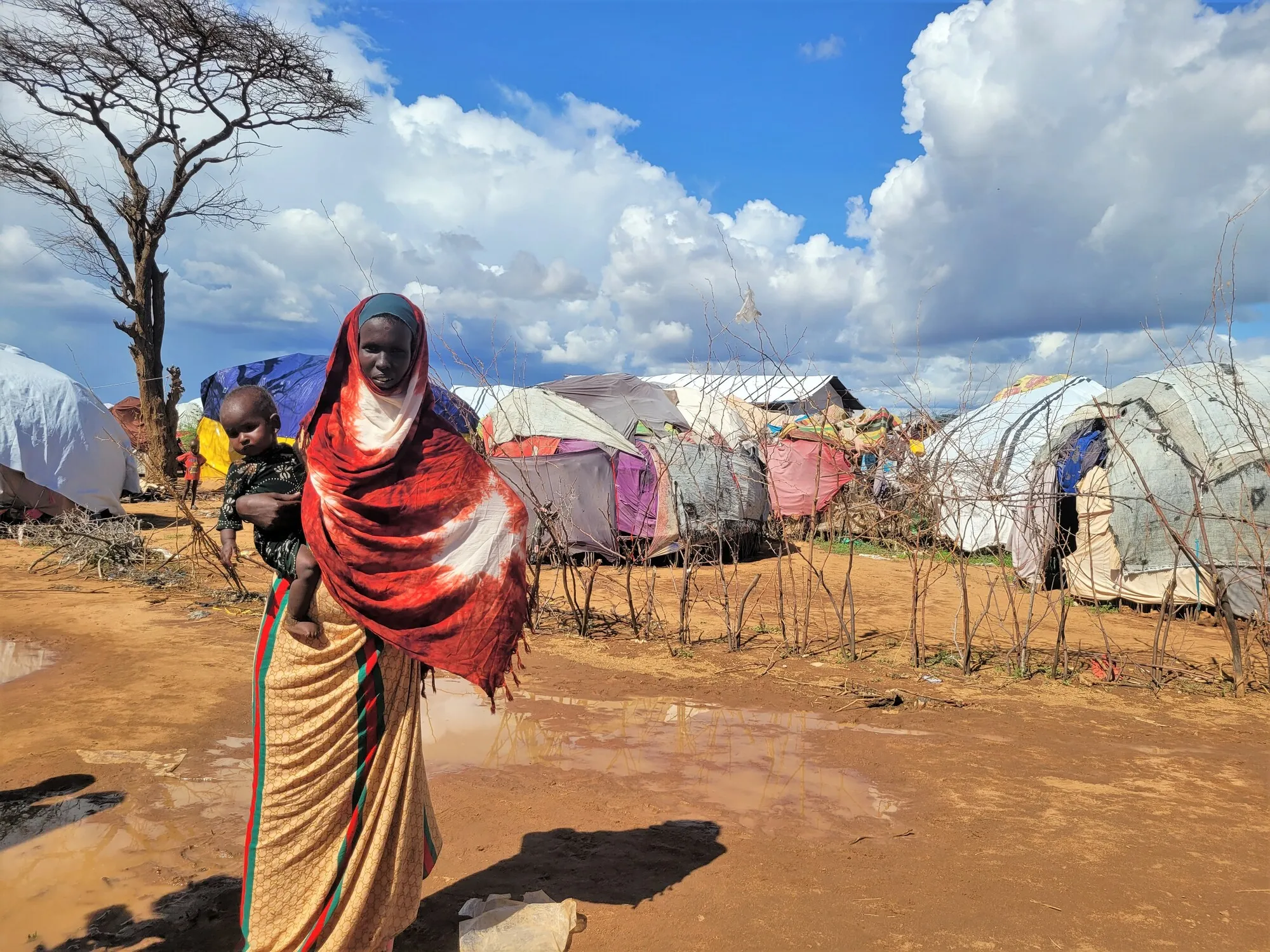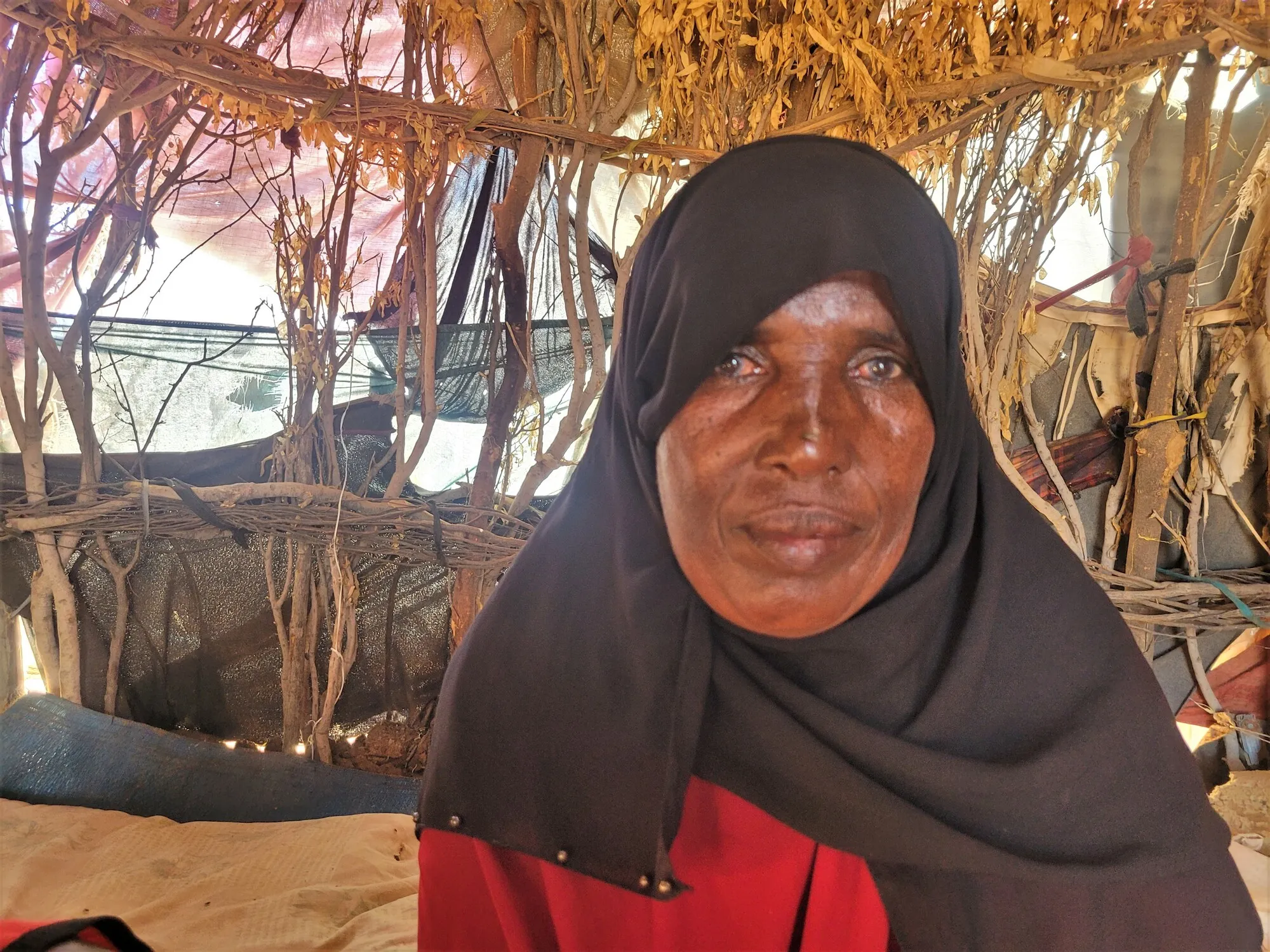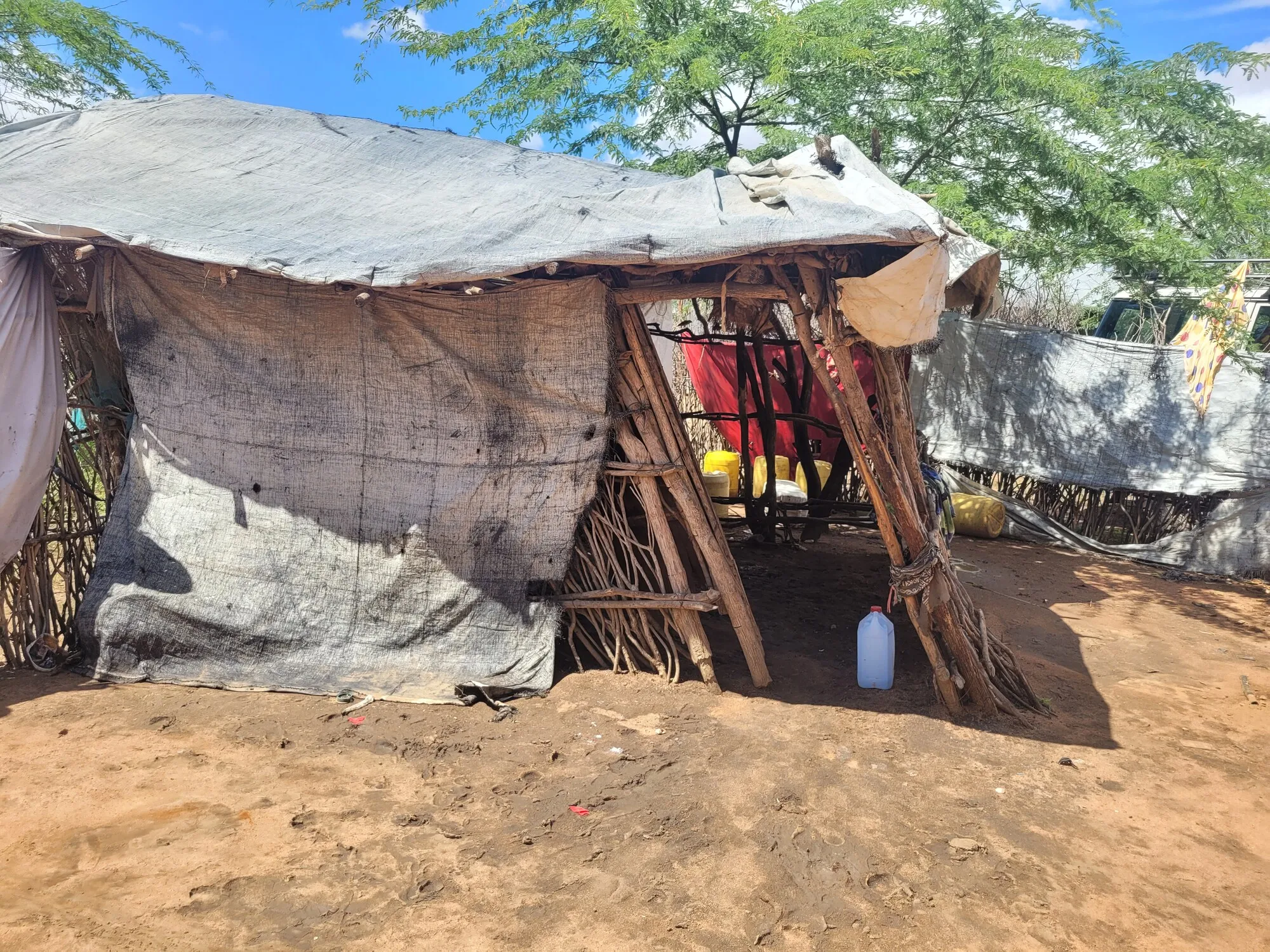The water for the boy comes from a puddle, a common sight around his new home in Dadaab, one of the biggest refugee camps in the world, located in Kenya, 56 miles from the Somali border.

Heavy rains have flooded the outskirts of the Dadaab refugee camp where new arrivals first settle. All photos: Sarah Easter/CARE
Heavy rains have flooded the outskirts of the Dadaab refugee camp where new arrivals first settle. All photos: Sarah Easter/CARE
The water for the boy comes from a puddle, a common sight around his new home in Dadaab, one of the biggest refugee camps in the world, located in Kenya, 56 miles from the Somali border.

The camp is home to three times the population it was designed for when it opened 30 years ago. Today, in addition to the 330,000 people living inside the camp, over 135,000 people live outside the official part of the camp, in makeshift huts made from old clothes and branches from bushes.
One of these refugees is Fatuma.
In her home on the outskirts, a sea of colored cloth — an old blue dress, a green scarf, and a checkered shawl — covers the holes between the branches holding up the big blanket that forms the roof of her home.

Eight of Fatuma’s family members fit inside the makeshift home, and they sleep there on the dirt floor. Five others sleep outside under the open sky.
When it rains, Fatuma puts her three small grandchildren under her garbassar, the shawl Somali women wear to cover their upper bodies, and together they wait for the rains to stop.
In February, Fatuma and her family of 12 arrived in Dadaab from their home in Somalia. She is not registered yet, which is why she’s here on the outskirts of the main camp, with more than 135,000 other new arrivals like her.
“We came from Mogadishu, where my husband died in an explosion. There we had no security and no education. It was very hard. It took us eight days to come here.
“We saved the money for a truck to the border, then we walked the rest of the way.”
Her hut is about 13 square feet, and she and her children built it themselves from sticks and old clothes.
“We have no supplies, everything here we either found or neighbors gave to us,” says Fatuma. “It was painful to leave home, even talking about it now, my emotions come up. But where else should we go?”
“At home in Somalia nothing is left, only fear and trauma.”
Every night she sits inside with her three grandchildren under her clothes, and they pray that the roof does not collapse on top of their heads.

The four girls were sleeping, huddled closely together on the bed under a white mosquito net, when suddenly a loud crack woke them up.
The back wall of their clay hut was falling slowly toward them, and water was breaking through. The water hit them, and the girls started screaming. Their mother, Saruro, came running in from where she had been sleeping to grab her children and try to find shelter in a neighbor’s hut.
In only seconds, their hut was flooded, and the wheat sacks standing beside the bed were destroyed.
That was their food for the next month.

The water destroyed everything inside, and the next morning Saruro, 36 and a mother of nine, could see the hut had become unstable. The next night they slept on the floor in a hut that was made from sticks instead of clay.
There, they were more vulnerable to floods, but the roof was more stable.
“I feel unsafe here. I don’t know if tomorrow the roof will collapse on top of my children’s heads,” says Saruro.

Saruro arrived in the Kenyan refugee camp Dadaab in 1992, when she was three years old.
“My family fled Somalia when the war broke out and there was a lot of killing. I do not remember Somalia,” Saruro explains.
“Dadaab feels like my home, because I have lived here for over 30 years.”
She went to school here, met her husband, married, and gave birth to nine children, all in the refugee camp.
Her eldest child is 18 years old, and the youngest is 10 days old.
“I just gave birth in the hospital for refugees. I went there because my baby then will automatically be registered. If I would have birthed her here at home, she would not receive any humanitarian aid,” she says.
“We lack essential services and cannot cover our basic needs. We have nothing to sleep on anymore because the bed was destroyed in the floods. I use a thin mat and a mosquito net to sleep on the floor,” Saruro says.
Inside the hut, it’s hotter than outside in the sun. The air is heavy and stifling. The sticks that hold the hut are loosely tied together so that a little air comes through the holes. Two of Saruro’s smaller children are looking inside through the holes as she talks.
“There is not enough drinking water for my family,” she says. “We do not eat three meals a day. We hardly have enough for one meal a day.”
The current heavy rains have also flooded the latrines. The one closest to her has collapsed.
“We also didn’t have any soap for between January and March. CARE has stepped in and given us some soap and jerrycans, so that we now can transport drinking water and wash ourselves.”

In the official camp, where Saruro and her family live, every tenth household has access to a water tap, but no such infrastructure exists in the outskirts.
To help the new arrivals, CARE distributes plastic jerrycans, constructs communal latrines, and supplies soap, as well as menstrual hygiene dignity kits for women and girls. CARE has also put up water tanks which can hold up to 5,000 liters of drinking water to help the new arrivals who are waiting for their time to be allocated in the official part of the camp.
“Without CARE we would have nothing. Now we at least we have access to some clean drinking water, soap, and jerrycans,” says Fatuma.
CARE and other aid organizations are facing multiple challenges including dwindling funding. The many new arrivals also pose a challenge, as the drinking water in the tanks built by CARE is not enough for everyone. Water deliveries are also delayed due to the current floods in Dadaab.
“When there is no water in the tanks, we sometimes walk for one and a half hours to go and find water. Then we roll the water back to our hut,” describes Fatuma.
Rolling the water means that the round jerrycans are put on the floor and rolled either by hand or by foot. Clean drinking water easily contaminates this way and can cause serious illnesses. This is why CARE distributes rectangular jerrycans, with an easy handle to carry, so the water stays clean and safe.
But to provide clean drinking water for all of the new arrivals, Dadaab needs more international funding.
Experts estimate Dadaab would need $42 million USD to cover the basic needs for the year, but only 2.2 percent of that — less than $1 million USD — has been funded so far. And the long-term projects that could build resilience or give future perspectives — such as income, training, and education — would require further accounting.
Fatuma doesn’t have plans for the future. She only lives from day to day, focusing on the survival of her family. “I plan to stay here and will only return to Somalia when there is peace,” she says.
When asked what she wishes for, Saruro looks down at her 10-day-old daughter before she answers. “My wish is, that my family and myself have good shelter, a functioning latrine, and more soap.”
She says she doesn’t have any expectations for a different future.
“We lost hope. We have been here too long,” she says. She readjusts her sitting position on her sleeping mat and starts breastfeeding her daughter under her shawl.
“I just want to see the modern world once.”